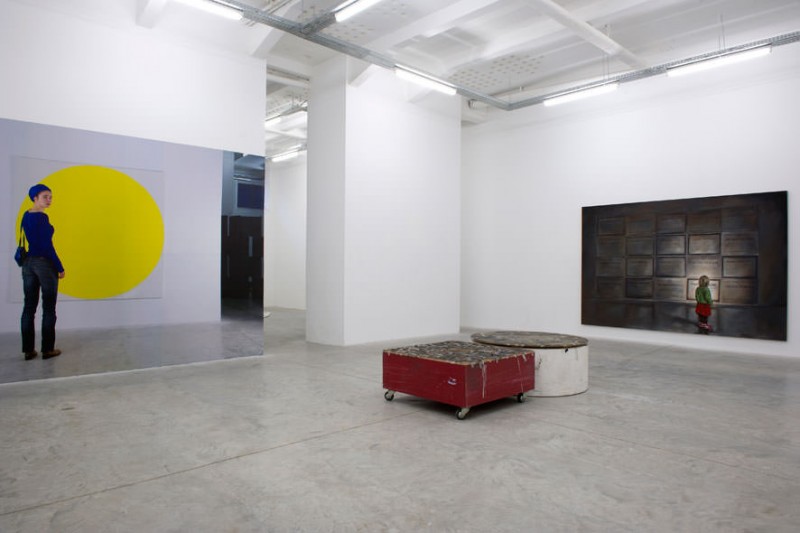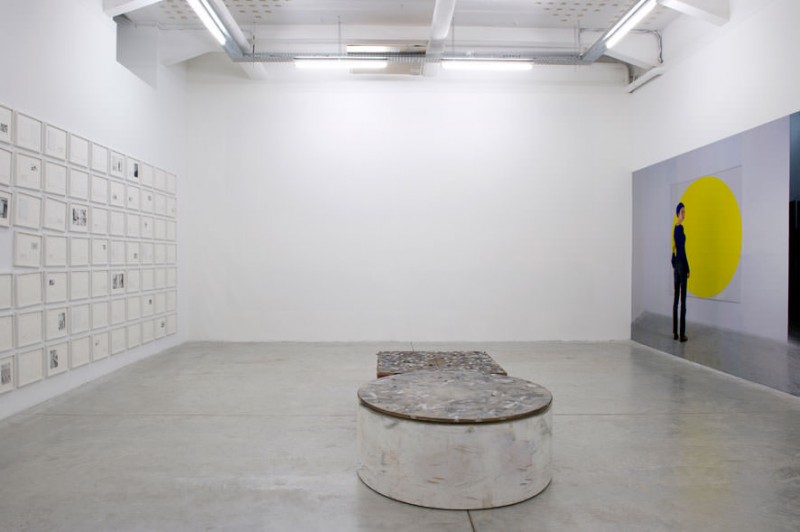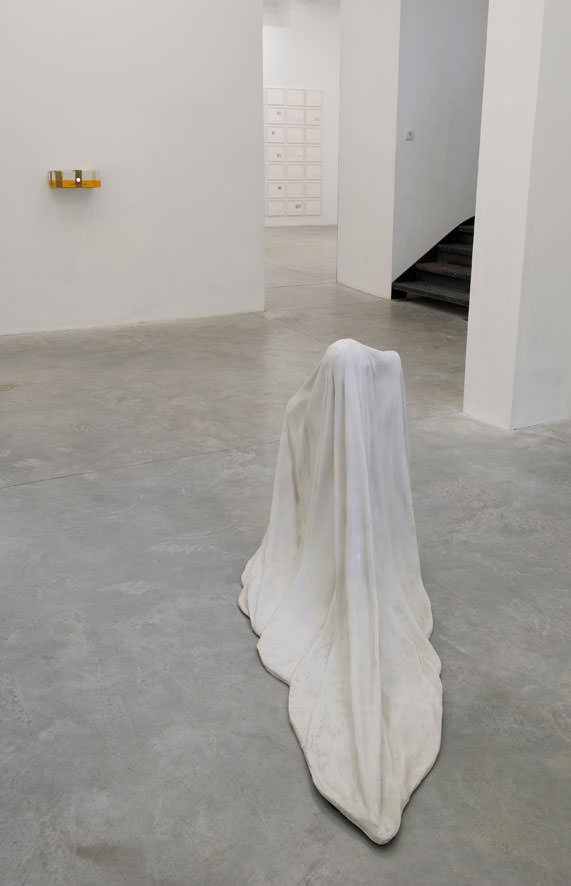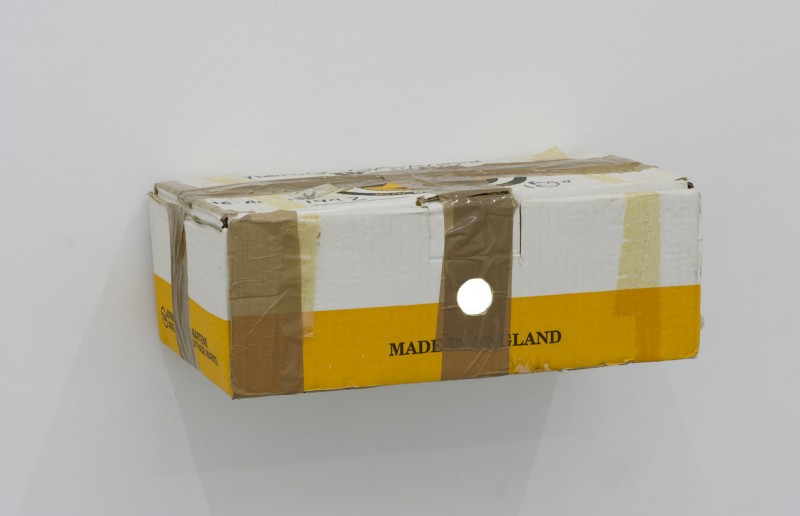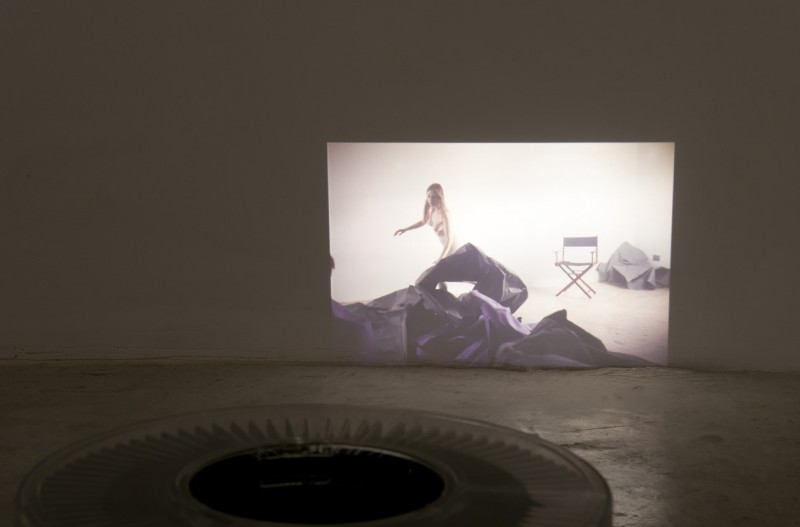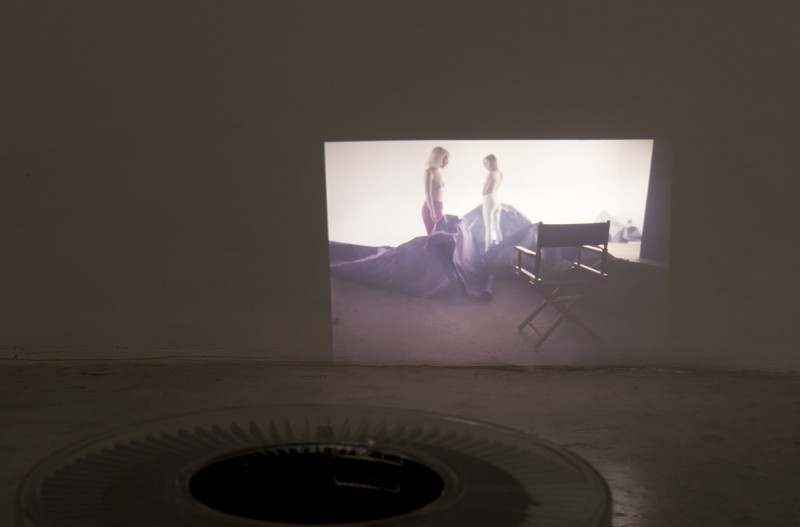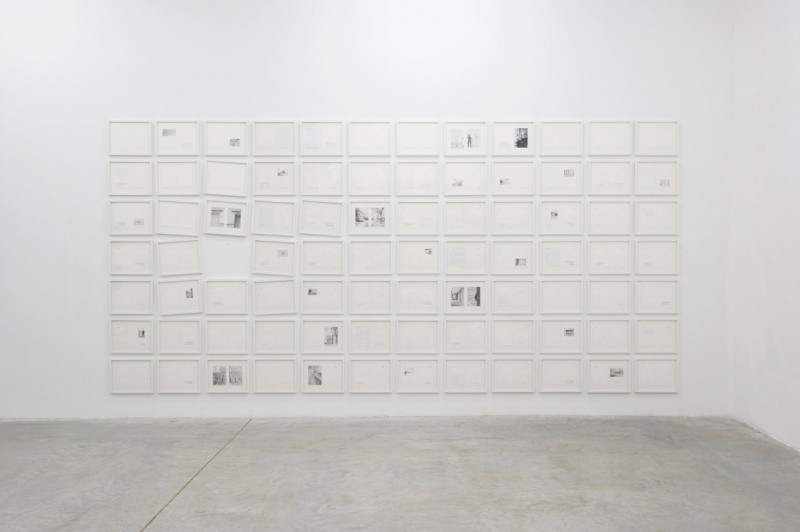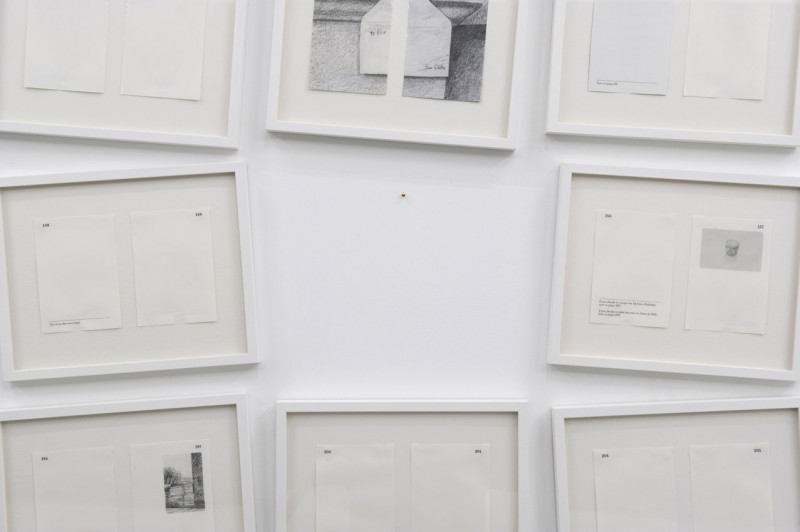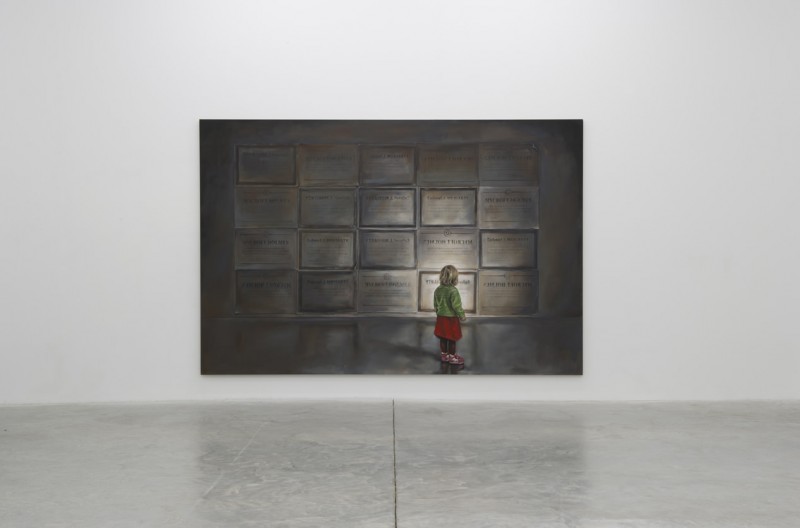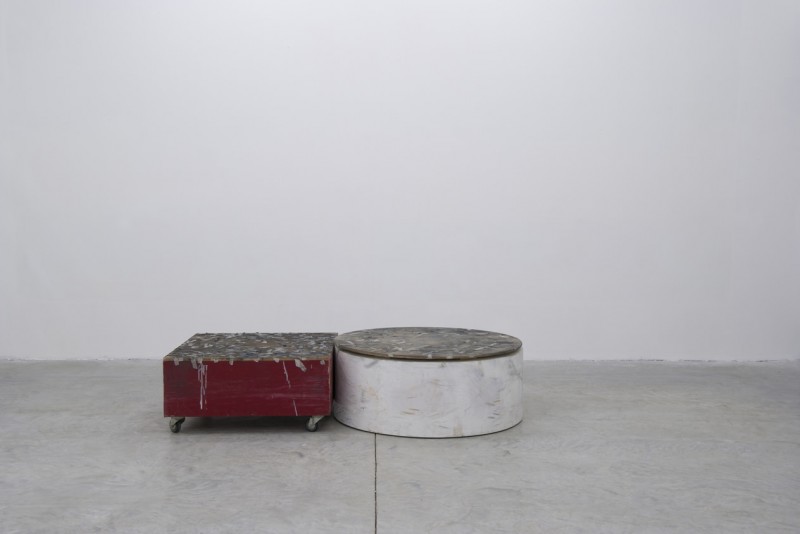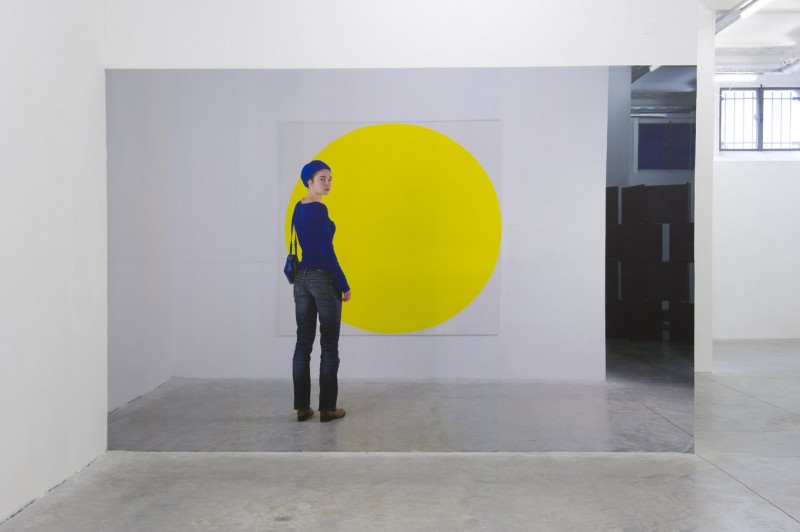Ryan Gander: An exercise in cultural semaphore
Solo exhibition
gb agency
February 25 - April 14, 2012
Spectators have to share my belief and they have to suppress their disbelief to be able to engage with the works. So maybe people that already come in with a stigma won’t get anything from it. So if there is a critique, maybe it’s a critique of a bad spectator.
Ryan Gander
Ryan Gander’s works take their origin from a research process, a development that always appears fragmented, unfolding like a series of smoke screens, that lead the viewer into unexpected detours. One of the characteristics of his practice is to create artworks that take every possible form, from sculpture, photography and painting to installation, sound and film, slideshows, objects and books to lectures and other entirely new forms—like the invention of a fictional word that he tries to pass into our everyday language. Ryan Gander likes to surprise and unsettle his audience.
While his works remain firmly connected to a conceptual logic, they provide snippets of lived experience, referring to various fields of knowledge, clichés, art history, the art world, and, most recently, to the modes of appearance and mediation of art itself (the places of art, exhibitions and their corollaries, but also their reception in the press). The experience of art—from frustration to inaccessibility—and the impossibility of its transcription was the core of Gander’s project ‘Locked Room Scenario’ for ArtAngel in London. The spectator was pushed into the role of a detective, approaching the works as traces and evidence, scrutinizing over material details and imagining those that couldn’t be perceived, a scenario which ultimately led to troubling feeling of confusion.
‘An exercise in cultural semaphore’ is the artist’s attempt to investigate the role of a creator when he himself becomes both the director and subject in the production of work. This exhibition marks an interesting transition for Gander, who is frequently critical of artists who appear within their own work, and is perhaps his most autobiographical show to date.
Following Gander’s installation from his 2009 exhibitions in Paris (Kadist Art Foundation and gb agency), ‘Only really applicable to those that can visualise it upside down, back to front and inside out’ (2009), which emitted puffs of smoke five seconds after a visitor left the space, in a kind of perpetual disappearing act, More than a title (2012) is activated by each visitor who passes the stairway leading towards the exhibition space. In this sound piece, a series of audio clips of humming and applause can be heard, as if to ironically highlight the rite of passage into the space, a guised introduction that serves as the public’s encouragement to follow through with the work set forth by the artist. More than a title also serves to alter the viewers’ state of mind, conditioning them towards a different comprehension of art, perhaps in the direction preluded in the title of the work itself.
Placed In the first room, An exercise in cultural semaphore (2012) is an old cardboard shoebox hung on the wall with a hand-written note that reads “Memory Capsule Box RYAN 1992 Age 16”. Emptied of the artist’s adolescent keepsakes, it reveals a hole on one side, through which one sees gb agency’s former rue Louise Weiss space, where the artist’s previous solo exhibition was held. The space is seen in state of a semi chaos, the table overturned and one neon light smashed. Like a menacing retroactive time capsule, the sculpture peers through an object from the artists’s past, projecting yet another past, one that never actually happened. A bit further away, like a little ghost wandering through the space, the human-scale marble sculpture Tell my mother not to worry (I) (2012) represents a white sheet thrown over the artist’s daughter, Olive. Ryan Gander imagines her as though she is walking through his studio, a tiny presence, omnipresent in his consciousness and specter to the audience. The sculpture marks the first of a series of works that will follow Olive’s growth over time. The artists plays with the idea of traditional sculpture with the draping marble, while also inserting part of his intimate sphere, hidden but revealed. Placed on the ground, Lost in my own recursive narrative (2012) is a small format slide show of 81 images of the artist directing two actresses in a photographer’s studio. The room is filled with crumpled backdrop paper and dry ice, in a partial reconstruction of the scene featuring Jane Birkin and Gillian Hills in Antonioni’s film, Blow Up. The two young ladies, overexcited and bare-chested, are having fun and destroying the photographer’s equipment, creating a chaos from which rises freedom—the rebellion of models against the dictatorship of images. The succession of images creates a feeling of suspended time, like pauses to a nonchalant game.
In the middle of the second room, The lady’s not for turning - (Alchemy Box No. 32) (2012) is part of the series of “Alchemy Box”, which experiment with the audience’s trust and belief: the boxes are sealed and contain objects within them, revealed to the audience in a list displayed on a nearby wall. The only way to know if the objects are really in the box is to open, and thereby destroy the box. What is more important? The ideas in the box, the recipe and ingredients for a new work that doesn’t yet exist, or the box that contains them, that appears to be a sculpture and is considered art? This Alchemy Box takes the form of two platforms, one circular and square, that we might expect to find in a drawing studio on which the model may pose. The elements listed on the wall include objects relating to the themes of reconstruction, documentation, as well as the mediated experience. For example, we can read the description of a color photograph taken during the artist’s research, an image leading to the production of the work Tell my mother not to worry (I), also present in the exhibition. I feel more in touch with my practise now than I ever have (2012) is a very large format painting representing the daughter of the artist looking at her father’s work previously shown in 2009 at gb agency—The pen marks on the page suggest the characters head does a double take, moving from left to right rapidly in amazement (2009). This installation was a display of public death notices announcing the death of J. Moriarty, one of the brothers of Sherlock Holmes’ sworn enemy, Profesor Moriarty, and another announcing the death of Mycroft Holmes, one of Sherlock Holmes rumored brothers.The child’s gaze is the only source of light into the painting, as if her naivety and freshness were the only true qualities needed to see things. It’s a hang! (the things you make they mock you, the things you make they mimic you) (2012) is an installation of 83 frames on the wall, carefully arranged in lines. The installation seems apparently disrupted or disturbed: on the left side, a frame is missing and a few others are crooked. They all contain two pages torn from a book made by Ryan Gander on Villa Arson (the architecture, the art school, the museum, Nice…), where in 2006 he exhibited the first version of this installation titled Happenstance. The novel here contains 364 pages of which only 168 are visible. All of the narrative traces have have been deleted, leaving only illustrations and possible solutions in the pursuit of a story («if you continue ahead, turn to page 288»). A fragmented narrative playing with frustration, impossibility to access the completed work and the necessity for the viewer to make up another possible plot. Human’s being human (blue on yellow) (2012) takes the form of an advertising billboard. A young French fashion model dressed in blue is standing within the space of gb agency, surprised by a photographer as she gazed at a painting that consists of a yellow circle on white canvas. But here, the model is not posing, her accusing gaze is directed to the photographer but also to the spectator. Using the codes of the advertising imagery and integrating them into the context of art and its exhibition, Ryan Gander seems to question the intimate relation to the artwork and the fragility of this link. Any velocity that isn’t zero (2012) is a series of eight photographic prints, each a different format and produced using various technology. Each of the images is of exactly the same moment and place but from eight different perspectives. The moment being documented is of Ryan Gander writing a caption to describe and accompanying work. By exhausting the subject and techniques, the artist underlies the impossibility of representing a reality. This self-portrait in reverse, delimited by its outline and not by its center, privileges the reality of the artist in a specific space-time. Here, Ryan Gander deals conceptually with a romantic subject.
The exhibition engages with constant tension, between biographical, narrative and conceptual elements. From within the exhibition display itself, like a magician, Ryan Gander makes up new mechanisms and creates a perpetual movement into which the spectator can slide.
